CHRNS: Cryogenic Goniometer
Studying the structure, dynamics, and electronic/magnetic properties of single crystals and thin films often necessitates a combination of low or ultra-low temperatures and magnetic fields and simultaneous control of the crystal orientation with respect to the neutron beam and instrument detector system. The control of crystal orientation is mostly performed outside the sample environment needed to achieve the temperature and field and held with a fixed vertical axis with sample rotations in the horizontal plane only possible by rotating the entire cryostat. On the occasion that the crystal orientation is not perfect and the desired scattering plane is not accurately oriented, the sample would need to be removed, realigned, and replaced in the cryostat, which results in wasting significant neutron time in re-preparing the system and limiting the range of reciprocal space available to an experimenter at a given time resulting in constraining the scientist’s response to the experiment in progress. To allow unprecedented experimental flexibility and maximize efficiency, we have developed a system using a sample goniometer inside the sample environments that allows on-the-fly realignment of the sample and maintains the experiment temperature and magnetic field conditions.
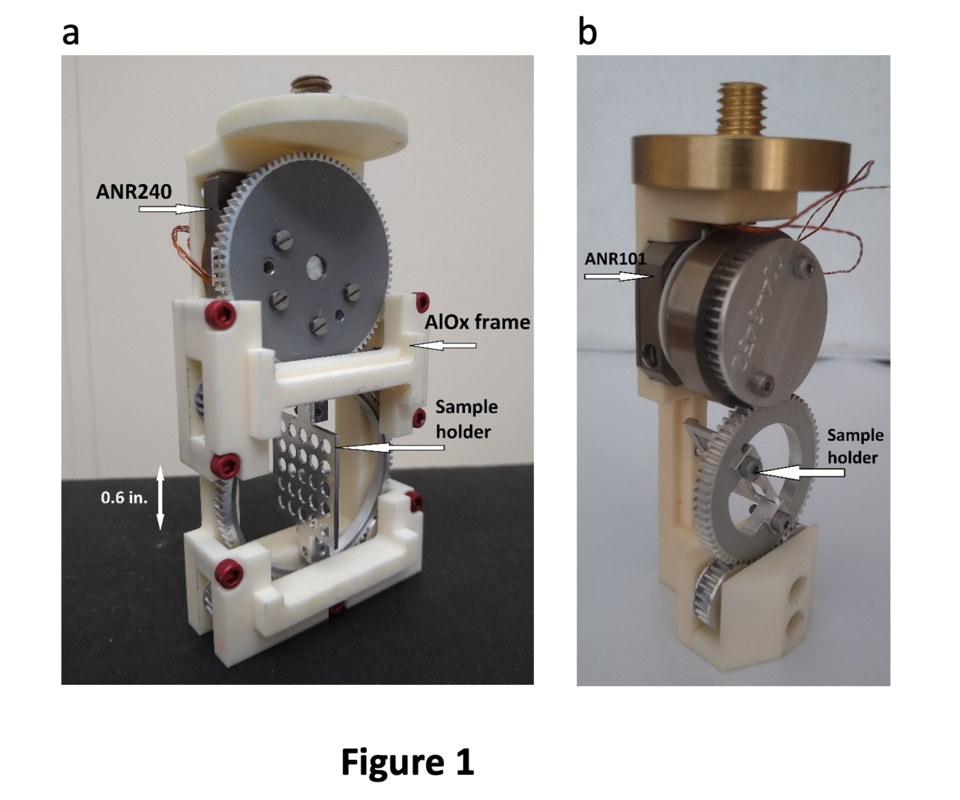
The prototype design of the low-temperature goniometer (Figure 1(a)) can operate at temperatures as low as 10 mK and under external magnetic fields to 20 T and has a horizontal rotation axis. It has been successfully used for several low-temperature magnetic neutron experiments, but only in the largest cryostat at the NCNR. With experience using the device, we improved several aspects to enhance the application and useability. These upgrades include:
- Reducing the size of the goniometer (Figure 1(b)) to fit in most cryogenic equipment, including:
- 50 mm helium dilution refrigerator inserts,
- 10 T and 11 T cryo-magnets
- All other helium cryostats
- Top loading CCR for the 7 T cryo-magnet
- Moving the rotation axis of the new goniometer to a different orientation in the horizontal plane, which extends experimental capabilities
- Improving the sample thermalization.
Previous low temperature testing indicated big temperature difference between sample and cryostat cold plate temperatures. We are not able of direct measurement of sample temperature during neutron experiment. So, cold plate temperature which is measured should be identical to the sample temperature in the whole experimental temperature ranges. The goniometers were placed inside a vacuum can with the aluminum walls (Figure 2 (a,b)) sealed in a helium atmosphere to provide sample thermalization. Further testing demonstrates excellent agreement between sample and cryostat cold plate temperatures within wide temperature range (Figure 2(c)).
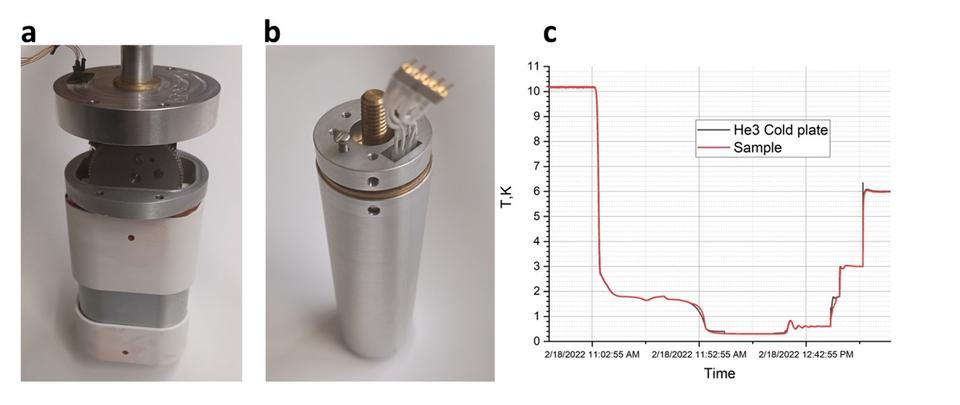
Figure 2
Also, we introduced low temperature sample rotator to provide rotation over vertical axis (Figure 3).
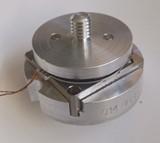
Figure 3
This device has several significant advantages over existing cryostat and sample stick vertical rotators. It has higher precision, can be easily attached, and operated with any available low temperature sample sticks and inserts, sample shielding is more efficient and can be designed based on neutron instrument requirements.
Another low temperature device is small angle cryogenic goniometer able to perform horizontal plane sample alignment inside cryostat (Figure 4). Goniometer placed inside neutron shielding and should be attached to the cryostat cold plate (sample position). Goniometer perform ± 3 Degrees tilt around perpendicular axes in horizontal plane.
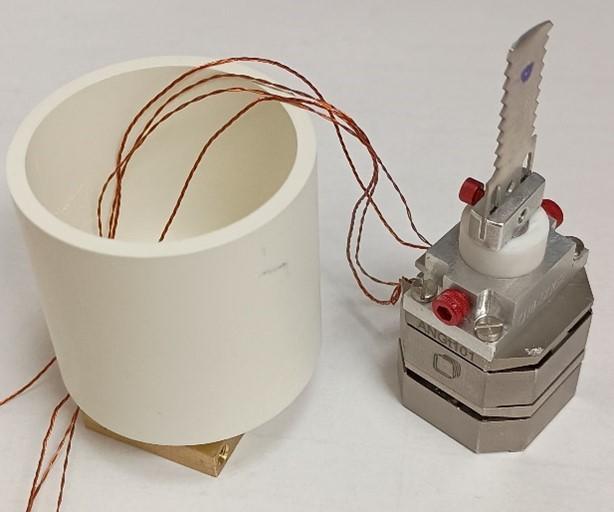
Figure 4
We implemented communications of goniometers and rotators with the instrument control software (NICE) for CHRNS-MACS to allow a seamless integration into an experimental protocol for our low temperature devices. Example of Cryogenic Goniometer Control Program represented on (Figure 5).
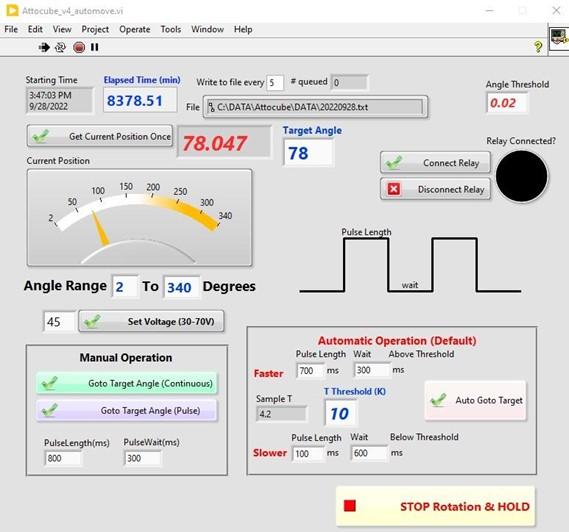
Figure 5
The new sample goniometers will allow easy adjustment of sample tilt and scattering plane switch for single crystals samples, enabling quick access to large range of momentum-space for the study of quantum magnetism, superconductivity, and other frontiers of condensed matter physics with neutron scattering.


